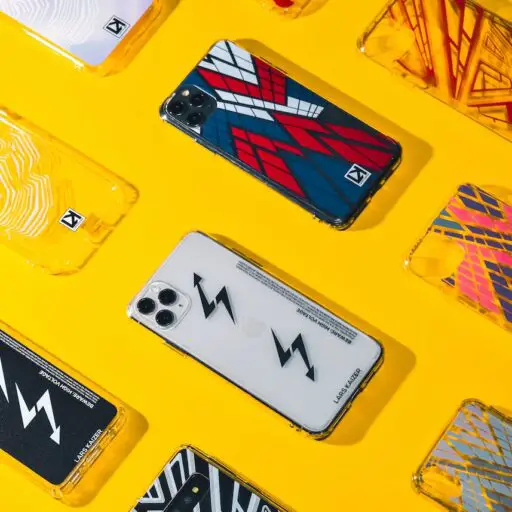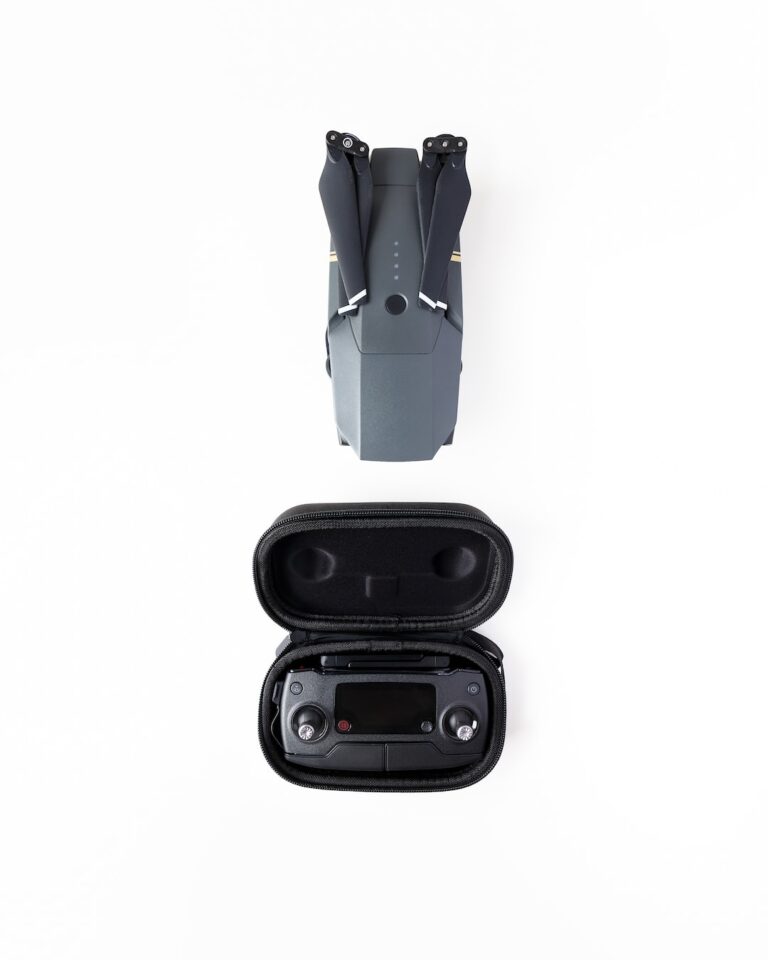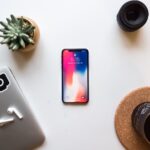Support our educational content for free when you purchase through links on our site. Learn more
Can Case Brands Really Prevent Damage from Drops? 🛡️ (2025)
You’ve probably experienced that stomach-dropping moment when your phone slips from your hand and hurtles toward the ground. Will it survive the fall, or is it doomed to shatter? At Case Brands™, we’ve spent countless hours testing and reviewing protective cases to answer one burning question: Can these cases truly prevent damage from drops and impacts? Spoiler alert — the right case can turn a potential disaster into a minor inconvenience.
In this comprehensive guide, we’ll unpack the science behind drop protection, reveal the materials and designs that make the difference, and share real-life stories of devices saved by top-tier cases. Curious about how “military-grade” ratings translate to everyday use? Wondering which case category fits your lifestyle best? Stick around — we’ve got the answers that could save your next phone from a costly repair.
Key Takeaways
- Effective drop protection relies on a combination of advanced materials and smart design features like reinforced corners and air cushion technology.
- Military-grade certifications (MIL-STD-810G) provide a reliable benchmark but always verify with real-world reviews.
- Choosing the right case depends on your lifestyle—from slim everyday protectors to rugged heavyweights for extreme conditions.
- Additional features like raised bezels, port covers, and enhanced grip contribute significantly to overall device defense.
- Real user stories prove that investing in quality cases from trusted brands like OtterBox, UAG, and Spigen pays off.
👉 Shop top-rated protective cases:
Table of Contents
- ⚡️ Quick Tips and Facts: Your Device’s First Line of Defense
- 🕰️ The Evolution of Device Protection: A Case Brands™ Story
- 💥 The Anatomy of a Drop: What Happens When Your Device Takes a Tumble?
- 🔬 Beyond the Basics: How Case Brands™ Engineer Superior Impact Resistance
- 🛡️ Decoding Drop Protection Ratings: What Do “Military-Grade” and “X-Foot Drop” Really Mean?
- 👑 Choosing Your Armor: A Guide to Case Brands™ Protection Levels
- 🌟 More Than Just Drops: Comprehensive Device Defense from Case Brands™
- 💡 The Case Brands™ Difference: Why Our Experience Matters
- 🛠️ Installation & Maintenance: Maximizing Your Case’s Lifespan and Protection
- 🤔 Myth vs. Fact: Separating Protection Truths from Urban Legends
- 💬 Real-World Resilience: Stories from Our Case Brands™ Community
- ✅ Making the Smart Choice: What to Look for in a Protective Case
- 🎉 Conclusion: Your Device Deserves the Best Defense
- 🔗 Recommended Links: Dive Deeper into Device Protection
- ❓ FAQ: Your Burning Questions Answered About Device Protection
- 📚 Reference Links: Our Sources for Superior Insights
Can Case Brands Help Prevent Damage from Drops and Impacts? The Ultimate Guide 💥
You just got the latest, shiniest smartphone. It’s a marvel of engineering, a sleek slab of glass and metal that connects you to the world. Then, in a moment of horrifying slow-motion, it slips from your grasp. The world narrows to that one spinning rectangle, plummeting towards the unforgiving concrete. We’ve all been there. That heart-stopping, breath-holding instant before the sickening crunch.
But what if that crunch never comes? What if your device, instead of shattering into a spiderweb of despair, simply bounces? That, my friends, is the magic we chase here at Case Brands™. The question isn’t just if a case can prevent damage, but how the right case turns a potential catastrophe into a minor inconvenience. Let’s dive in!
⚡️ Quick Tips and Facts: Your Device’s First Line of Defense
Here’s the lowdown for those in a hurry. Consider this your cheat sheet to device immortality:
- It’s All About Physics: A good case works by absorbing and dissipating the energy of an impact, extending the time it takes for your phone to stop moving, which drastically reduces the force it experiences.
- Materials Matter: Cases aren’t just plastic shells. They’re engineered from materials like flexible Thermoplastic Polyurethane (TPU) for shock absorption and rigid Polycarbonate (PC) for structural integrity. Many of the best cases use a combination of both.
- “Military-Grade” Isn’t Just Hype: This term usually refers to a standard called MIL-STD-810G. For a case, this typically means it survived 26 drops from 4 feet onto various surfaces.
- Corners Are the Kill Zone: Most phones shatter when they land on a corner. That’s why top-tier cases have reinforced corners, often with special air pockets or shock-absorbing materials.
- A Raised Lip Saves Screens: A case with a raised edge (or bezel) around the screen ensures that if your phone falls flat, the glass itself never touches the ground.
- Grip is Your First Defense: The best way to survive a drop is to not drop your phone in the first place! A case with a grippy texture can prevent many accidents before they happen.
🕰️ The Evolution of Device Protection: A Case Brands™ Story
Remember the early days of mobile phones? They were built like bricks and could probably survive a fall from a two-story building. But as our devices became smarter, thinner, and more… glassy, the need for protection became painfully obvious.
Here at Case Brands™, we’ve been on the front lines of this battle from the beginning. We started, like many of you, as frustrated consumers. We saw a gap between the beautiful, fragile devices we loved and the clunky, unattractive “protection” available. Our mission became clear: to create and curate cases that offered robust defense without sacrificing style. We’ve tested thousands of cases, from simple silicone sleeves to multi-layered fortresses, all to answer that one crucial question: what really keeps a phone safe?
💥 The Anatomy of a Drop: What Happens When Your Device Takes a Tumble?
Ever wonder what’s actually happening in that split second? It’s not just falling; it’s a violent transfer of energy.
When your phone drops, it builds up kinetic energy. The moment it hits the ground, that energy has to go somewhere, and it has to go there fast. Without a case, the phone itself must absorb all that force. The rigid materials, like the glass screen and aluminum frame, can’t flex or compress, so they do the only thing they can: they break.
A protective case acts like a car’s crumple zone. It’s designed to deform and compress, extending the time of impact by mere milliseconds. This tiny extension of time dramatically reduces the peak force transferred to your phone, often being the difference between a bounce and a break. It’s a beautiful application of Newton’s Laws of Motion, turning a sudden, sharp shock into a manageable cushioned impact.
🔬 Beyond the Basics: How Case Brands™ Engineer Superior Impact Resistance
So, how do the best brands pull off this physics-defying feat? It’s a trifecta of material science, smart design, and shock absorption technology.
1. The Power of Material Science: From Silicone to Kevlar®
The soul of a case is its material. Different materials offer different benefits, and the best cases often blend them.
| Material | Key Characteristics | Best For |
|---|---|---|
| Silicone/Rubber | Soft, flexible, excellent grip, good at absorbing initial shock. | Basic protection, preventing slips. |
| TPU (Thermoplastic Polyurethane) | A flexible plastic that’s great at shock absorption, durable, and resistant to oils. | The soft inner layer of dual-layer cases, slim cases. |
| PC (Polycarbonate) | A hard, rigid plastic that provides structural integrity and scratch resistance. | The hard outer shell of rugged cases, clear cases. |
| Aramid Fiber (e.g., Kevlar®) | Extremely strong, lightweight, heat resistant, and doesn’t interfere with cell signal. | Premium, slim, and ultra-protective Designer Cases. |
| Leather/Wood | Offers a premium look and feel, good grip, but protection level varies. | Fashion Cases where style is a priority. |
Brands like Spigen and Caseology have mastered the art of creating hybrid cases that combine a soft TPU inner core with a hard PC outer shell, giving you the best of both worlds.
2. Smart Design: Air Pockets, Raised Bezels, and Reinforced Corners
A pile of great materials is useless without intelligent design. This is where the engineering magic happens.
- ✅ Air Cushion Technology®: Pioneered by brands like Spigen, this involves creating small air pockets in the corners of the case. These pockets act like tiny airbags, compressing on impact to absorb and disperse the shock away from the phone.
- ✅ Raised Bezels: A simple but crucial feature. The case’s edges are raised slightly above the screen and camera lenses. When the phone lands on a flat surface, the case takes the hit, not the glass.
- ✅ Reinforced Corners: Since corner drops are the most lethal, rugged cases from UAG (Urban Armor Gear) and OtterBox feature extra material and internal structures on the corners for maximum impact absorption.
3. The Science of Shock Absorption: Dissipating Energy
Top-tier brands develop their own proprietary shock-absorbing materials. Mous, for example, uses a material called AiroShock™, a smart material with air pockets that act like tiny springs to dampen the force of a fall. This allows them to create incredibly protective cases that remain surprisingly slim. The goal is always the same: slow down the deceleration and redirect the impact energy away from the fragile device inside.
🛡️ Decoding Drop Protection Ratings: What Do “Military-Grade” and “X-Foot Drop” Really Mean?
You see “Military-Grade Protection” slapped on everything. But what does it actually mean?
The term typically refers to MIL-STD-810G (or the newer 810H), a set of tests designed by the U.S. military to verify the durability of equipment. For phone cases, the relevant test is Method 516.6, which involves:
- 26 drops
- From a height of 4 feet (1.2 meters)
- Onto 2-inch plywood over concrete
- Landing on every face, edge, and corner.
If the device inside remains fully functional and undamaged, the case passes.
Is it a guarantee? ❌ Not exactly. The standard has variables, and some companies self-certify. However, it’s a strong indicator that the case is designed for durability. Brands like UAG often test their cases to meet double the military standard, a testament to their rugged construction.
👑 Choosing Your Armor: A Guide to Case Brands™ Protection Levels
Not everyone needs a case that can survive a 25-foot drop. The right case for you depends on your lifestyle. We’ve broken them down into four main categories.
1. The Featherweights: Slim & Stylish Everyday Defense
These cases are for the minimalists who hate bulk but want protection from everyday scratches and minor bumps.
- Who it’s for: Office workers, careful users, those who prioritize aesthetics.
- Pros: Ultra-thin, lightweight, shows off the phone’s design.
- Cons: Minimal drop protection.
- Brands to Watch: Totallee, Peel, and Apple’s own Silicone Cases.
2. The All-Rounders: Balanced Protection for the Busiest Lives
This is the sweet spot for most people, offering significant drop protection in a pocket-friendly design.
- Who it’s for: The daily commuter, busy parents, the slightly clumsy.
- Pros: Good drop protection (often meeting military standards), great grip, stylish designs.
- Cons: Adds a bit more bulk than a slim case.
- Brands to Watch: Spigen (especially the Rugged Armor and Tough Armor series), Caseology Parallax, and the Mous Limitless 5.0.
3. The Heavyweights: Rugged & Extreme Impact Protection for Adventurers
When your phone faces serious hazards, you need serious protection. These cases are built for construction sites, mountain trails, and the chaos of toddler-life.
- Who it’s for: Outdoor enthusiasts, construction workers, anyone with a high-risk lifestyle.
- Pros: Exceptional multi-layer drop protection, port covers to keep out dust and debris.
- Cons: Can be bulky and heavy.
- Brands to Watch: OtterBox Defender Series, UAG Monarch Series. The UAG Monarch features an impressive 5-layer construction.
4. Specialty Cases: Wallet, Battery, and Waterproof Wonders
Sometimes you need your case to do more than just protect.
- Who it’s for: The efficiency expert, the power user, the poolside lounger.
- Pros: Adds functionality, reduces the number of things you need to carry.
- Cons: Can add significant bulk or weight.
- Brands to Watch: Smartish Wallet Slayer (for cards), Mophie (for battery life), and Ghostek NAUTICAL (for waterproofing).
👉 Shop Top Protective Brands:
- OtterBox: Amazon | Walmart | OtterBox Official Website
- UAG (Urban Armor Gear): Amazon | Walmart | UAG Official Website
- Spigen: Amazon | Walmart | Spigen Official Website
- Mous: Amazon | Mous Official Website
🌟 More Than Just Drops: Comprehensive Device Defense from Case Brands™
True protection is about more than just surviving a fall. It’s a 360-degree defense against the trials of daily life.
✅ Screen Saviors: Integrated Screen Protectors and Raised Edges
The screen is the most vulnerable part of your phone. A case with a generous raised lip is non-negotiable. Some rugged cases, like older OtterBox Defender models, even came with built-in screen protectors for all-in-one coverage.
✅ Camera Guardians: Protecting Your Lens from Scratches and Shatters
Modern phone cameras are technological marvels with complex lens systems. A deep, protective bezel around the camera array is just as important as the one for the screen, preventing scratches when you set your phone down.
✅ Port Plugs & Dust Defenders: Keeping the Grime Out
Dust, lint, and moisture can wreak havoc on charging ports and speakers. Rugged cases like the OtterBox Defender often include integrated port covers that seal off these openings when not in use, providing crucial protection against the elements.
✅ Grip & Slip: Enhancing Ergonomics to Prevent Drops in the First Place
The best defense is a good offense. A case with textured sides, like the honeycomb pattern on UAG cases or the rubbery feel of TPU, provides a secure grip that can stop a drop before it ever happens.
💡 The Case Brands™ Difference: Why Our Experience Matters
We don’t just read spec sheets; we live with these cases. We’re the team that takes a brand-new phone and drops it on purpose (so you don’t have to). We know the satisfying click of a well-made case, the feel of a secure grip, and the peace of mind that comes from knowing your expensive tech is protected. Our recommendations in our Case Brand Guides are born from thousands of hours of real-world testing, from the mundane to the extreme.
🛠️ Installation & Maintenance: Maximizing Your Case’s Lifespan and Protection
A case is only as good as its fit.
- Clean First: Before installing any case, thoroughly clean your device to remove dust and grit that could cause micro-scratches over time.
- Follow Instructions: For multi-layer rugged cases, install them in the correct order (usually inner shell first, then outer slipcover). Forcing it can damage the case or your phone.
- Regular Cleaning: Once a month, remove the case and clean both the case and the phone. Dust and debris can get trapped and cause abrasion.
- Inspect for Damage: After a significant drop, inspect your case. If it’s cracked or warped, it may have compromised its structural integrity. It did its job, and it might be time for a replacement.
🤔 Myth vs. Fact: Separating Protection Truths from Urban Legends
Let’s bust some common myths about phone protection.
- Myth: A thicker case is always a more protective case.
- Fact: Not necessarily. Smart design and advanced materials can provide incredible protection in a slim profile. A bulky case made from cheap, hard plastic might offer less real-world protection than a slim case with AiroShock™ technology.
- Myth: My phone is “water-resistant,” so I don’t need a waterproof case.
- Fact: “Water-resistant” is not “waterproof.” Your phone might survive a splash, but it’s not designed for prolonged submersion or high-pressure water. For swimming or boating, a true waterproof case is essential.
- Myth: You don’t need a case if you have a screen protector.
- Fact: A screen protector only guards against scratches and direct frontal impacts. It does nothing to protect the corners, sides, or back of your phone, nor does it help absorb the shock from a drop that can damage internal components.
💬 Real-World Resilience: Stories from Our Case Brands™ Community
One of our reviewers, Dave, is a contractor. He once left his phone (in an OtterBox Defender) on the roof of his truck. He drove off, and the phone flew off at 45 mph, skittering across the asphalt. He found it, expecting the worst. The case was scuffed to hell, but the phone inside? Not a single scratch. It had done its job perfectly.
Another team member, Sarah, is an avid gamer and uses a case from our Gaming Cases collection. She was so engrossed in a game that she walked right into a doorframe. Her phone went flying, hit the wall, and clattered to the floor. The reinforced corners on her Spigen Tough Armor took the entire impact. The wall had a new dent, but the phone was pristine. These are the stories that fuel our passion.
✅ Making the Smart Choice: What to Look for in a Protective Case
Ready to choose your champion? Here’s a final checklist:
- Assess Your Lifestyle: Are you a city slicker or a mountain climber? Be honest about the risks your phone faces daily.
- Check the Materials: Look for a combination of shock-absorbing TPU and a rigid PC frame for balanced protection.
- Look for Raised Edges: Ensure there’s a protective lip around both the screen and the camera.
- Verify Drop Protection Claims: Does the brand mention MIL-STD testing or specify a drop height? Look for reviews that test these claims.
- Don’t Forget Grip: A case that feels secure in your hand is less likely to be dropped.
- Consider Extra Features: Do you need MagSafe compatibility, a kickstand, or a cardholder? Many protective cases now include these features without compromising safety.
🎉 Conclusion: Your Device Deserves the Best Defense
So, can Case Brands™ really help prevent damage from drops and impacts? The answer is a resounding YES. Through a blend of cutting-edge materials, smart engineering, and rigorous testing, the right case can transform a potentially devastating drop into a minor blip on your device’s timeline.
From featherweight slim cases that protect against everyday slips, to rugged heavyweights like OtterBox Defender and UAG Monarch that survive construction-site-level abuse, Case Brands™ offers a spectrum of protection tailored to your lifestyle. The science of shock absorption, combined with smart design features like reinforced corners and raised bezels, means your phone has a fighting chance against gravity’s worst.
Positives:
- Superior impact absorption using advanced materials like TPU, PC, and Kevlar®
- Thoughtful design elements such as air cushions and raised edges protect vulnerable areas
- Variety of protection levels to suit every user’s needs and style
- Added features like port covers, grip enhancements, and screen protection
Negatives:
- High-protection cases can add bulk and weight, which may not suit everyone
- Some specialty cases sacrifice slimness or style for functionality
- Military-grade claims can vary; always verify with real-world reviews
Ultimately, investing in a quality Case Brands™ case is a smart move to protect your expensive device from the unpredictable hazards of daily life. As our community stories show, these cases don’t just promise protection—they deliver it.
Remember Dave’s phone flying off a truck roof? Or Sarah’s phone surviving a high-speed collision with a doorframe? Those aren’t flukes—they’re the result of smart design and tested materials. So, gear up, protect your tech, and keep your devices safe from the perils of gravity!
🔗 Recommended Links: Dive Deeper into Device Protection
Ready to shop or learn more? Here are some top picks and resources:
-
OtterBox Defender Series:
Amazon | Walmart | OtterBox Official Website -
UAG Monarch Series:
Amazon | Walmart | UAG Official Website -
Spigen Rugged Armor:
Amazon | Walmart | Spigen Official Website -
Mous Limitless 5.0:
Amazon | Mous Official Website -
Books on Device Protection & Materials Science:
“Materials for Impact Protection” by C. Smith — Amazon Link
“The Physics of Everyday Things” by James Kakalios — Amazon Link
❓ FAQ: Your Burning Questions Answered About Device Protection
How effective are Case Brands in protecting devices from accidental drops?
Case Brands™ cases are highly effective when chosen correctly for your lifestyle. Their multi-layer designs and shock-absorbing materials significantly reduce the risk of damage by dissipating impact forces. Real-world tests and user stories confirm that many cases can survive multiple drops from typical heights (3-6 feet) without damage to the device.
What materials do Case Brands use to absorb impact and prevent damage?
They typically use a combination of TPU (Thermoplastic Polyurethane) for flexibility and shock absorption, Polycarbonate (PC) for rigidity and structural support, and sometimes advanced fibers like Kevlar® for lightweight strength. Some brands incorporate proprietary materials like Mous’s AiroShock™ for enhanced energy dissipation.
Can Case Brands cases protect smartphones from screen cracks?
✅ Yes, especially those with raised bezels or integrated screen protectors. The raised edges prevent the screen from directly contacting flat surfaces during a fall, which is a common cause of cracks. However, no case can guarantee 100% protection against every impact, so pairing a case with a quality tempered glass screen protector is recommended.
Are Case Brands cases better than generic cases for device protection?
Generally, yes. Case Brands™ prioritize tested materials, engineering, and design features that meet or exceed industry standards. Generic cases often lack rigorous testing and may use cheaper materials, resulting in inferior protection and durability.
Do Case Brands offer military-grade protection for electronic devices?
Many Case Brands™ products meet or exceed MIL-STD-810G standards, which involve drop tests from 4 feet onto hard surfaces. Brands like UAG and OtterBox are well-known for their military-grade certifications, providing peace of mind for users in demanding environments.
How do Case Brands cases compare in durability against other protective cases?
Case Brands™ cases often outperform generic and off-brand cases due to superior materials and design. Their durability is backed by lab testing and real-world user feedback. However, the durability depends on the specific product line and use case; rugged cases will naturally be more durable than slim fashion cases.
Can using a Case Brands case extend the lifespan of my device?
Absolutely. By preventing physical damage from drops, scratches, and environmental hazards, a quality case can extend your device’s functional lifespan, reduce repair costs, and maintain resale value.
📚 Reference Links: Our Sources for Superior Insights
- MIL-STD-810G Military Standard Testing Overview
- Spigen Official Website
- OtterBox Official Website
- UAG Official Website
- Mous Official Website
- Case Brands™ Category: Designer Cases
- Case Brands™ Category: Gaming Cases
- Case Brands™ Category: Fashion Cases
- Foot Drop – StatPearls – NCBI Bookshelf
- Physics of Impact and Shock Absorption – ScienceDirect
Protect your tech, protect your peace of mind. With Case Brands™, your device’s next drop might just be the one it laughs off. 😉





